Best drum machine plugins 2025: Sample and synthesis VSTs for beatmaking
From 808 and 909 emulations to innovative drum synths and AI-assisted samplers
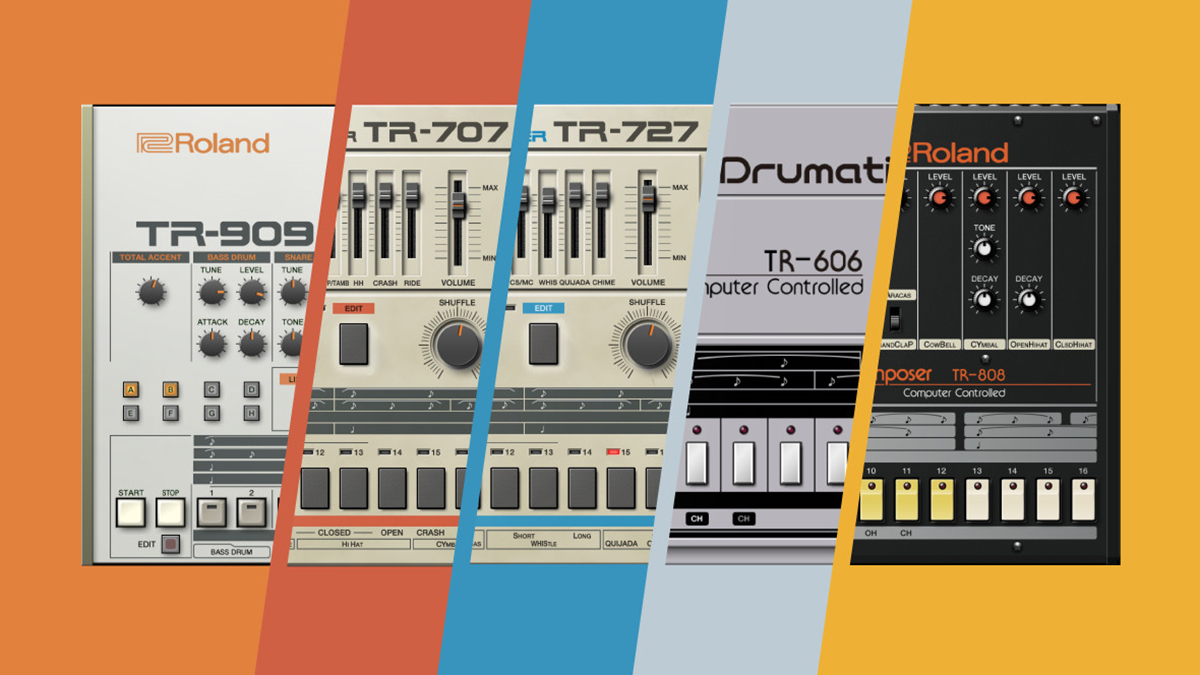
The term ’drum machine’ can mean a multitude of things in 2023, encompassing everything from emulations of vintage beatboxes and new devices inspired by them, to full-on multichannel groove production systems with in-depth editing and programming tools, mixing functionality and high-quality effects. As such, deciding on a best drum machine plugin can be tricky.
Always up for a challenge, we’ve brought together what we consider to be the best dozen plugins and standalone applications currently available ‘for the creation of beats’ - surely a universally acceptable definition.
If you're still not sure which is the best drum machine plugin for you, we also have some handy buying advice at the end of the article to help you on your way.
Best drum machine plugins: MusicRadar’s choice
If you’re a dance music producer looking for the staple drum sounds that defined the genre, it’s hard to go wrong with Roland’s Cloud emulations of the iconic TR-808 and TR-909. These are the foundational beatmakers of house, techno, hip-hop and a multitude of other electronic genres, and Roland’s own versions flawlessly replicate the sound and workflow that helped to create thousands of classic tracks.
That said, while Roland’s plugins do add in a variety of modern niceties such as preset libraries and additional sequencing tools, they are still very much based on vintage machines. If you look past those retro influences, there’s a wealth of innovation within the drum machine sector right now.
At the more futuristic end of things, we have tools such as XLN XO and Algonaut Atlas that use AI to help you make more from your library of sampled sounds. Similarly ‘intelligent’ is Audiomodern’s excellent Playbeat, which allows users to mix up their sequences with smart randomisation. Finally, Beat Scholar from newcomer Modalics offers a genuinely fresh take on percussive step sequencing with its sliceable ‘beat pizzas’. Each has the capacity to help you overcome creative roadblocks by inspiring new sounds and sequences.
Best drum machine plugins: Product guide
1. Roland Cloud Drum Machine Collection
Our expert review:
Specifications
Reasons to buy
Reasons to avoid
There have been countless excellent drum machines over the past few decades, but no instrument has dominated the beatmaking landscape like Roland’s TR machines. Four decades on, the TR-909 remains the go-to machine for house and techno drums, while the TR-808 - or, at least, sampled versions of its sounds - provides the backbone of contemporary hip-hop.
Inevitably, these machines have been sampled, emulated and replicated ad nauseum. Even plugins that don’t explicitly ape the look or workflow of Roland’s beatmakers will more often than not include sounds that owe a debt to the TR range. This ubiquity doesn’t make the sounds any less essentia,l though.
In the software realm, if you want the authentic look, sound and workflow of the original machines, you can’t beat Roland’s own official emulations. Roland’s Drum Machine Collection includes spot-on recreations of the 808 and 909, but also the lesser-known but still worthwhile TR-606, TR-707 and TR-727.
These come as part of the ‘Legendary’ instruments offered in the Ultimate tier of the company’s Cloud subscription service, or as a bundle priced at $499 (plus tax) for a lifetime key. This makes them one of the more expensive options when it comes to accessing vintage drum sounds.
If you’re solely interested in drum sounds, there are better value solutions – Roland’s hardware TR-6S drum machine, for example, can be had for under $400/£400, and includes the same emulated sounds and a good level of DAW integration. However, Roland’s Cloud subscription has the added benefit of also including a wealth of iconic instrument emulations, plus access to an array of samples and effects.
Read the full Roland Cloud review
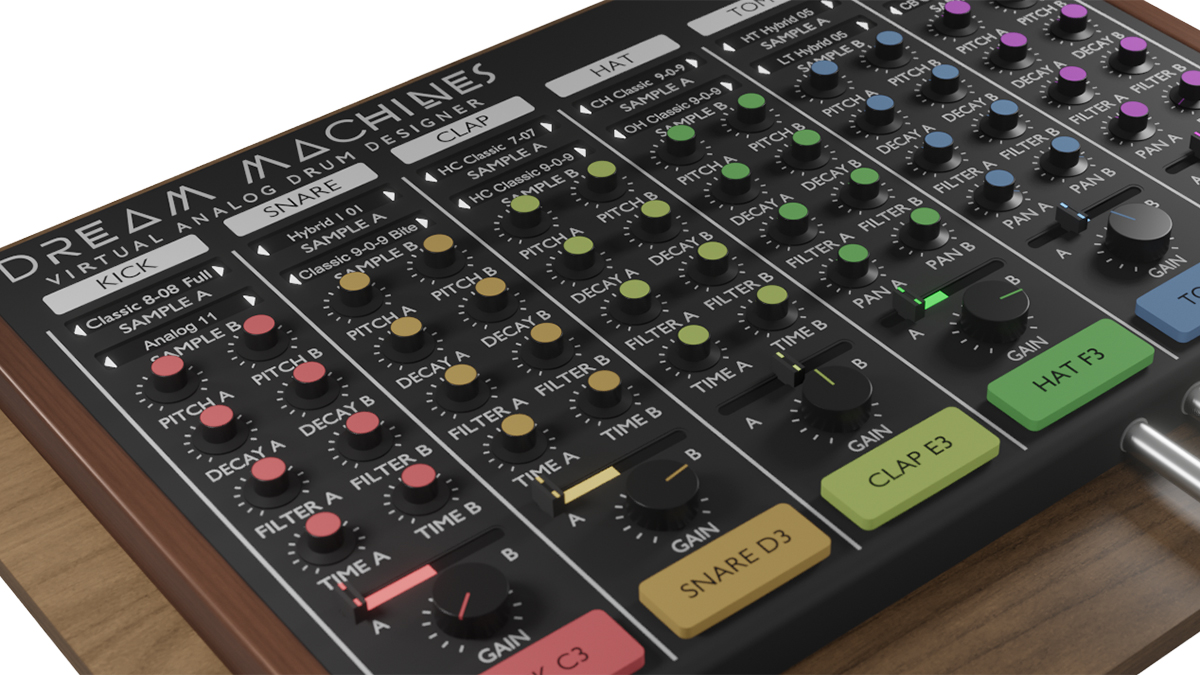
2. MeldaProduction DreamMachines
Our expert review:
Specifications
Reasons to buy
Reasons to avoid
MeldaProduction DreamMachines is a slick and modern sample-based drum machine that features individual channels for kick, snare, clap, hat, tom and perc. Each of these contains an A and B part, which can be loaded with a selection of samples from the analogue, digital and acoustic realms.
Each of these two parts has its own independent pitch and envelope controls, as well as a filter, making it easy to create layered sounds within each of the plugins’ channels. It’s possible to crossfade between layers, as well as modulate changes and set up velocity control, making it easy to add variety and movement to a groove.
DreamMachines also offers a well-equipped effects section, largely inspired by classic hardware, enables allows users to apply treatments such as tube-style saturation, compression, reverb and delay.
With a library of 500 samples and 100 preset kits included, there’s plenty to explore. All in all, it’s quite a bargain for the price.

Specifications
Reasons to buy
Reasons to avoid
XO’s innovative ‘Space’ sample browsing interface never gets old. Presenting an unlimited number of drum and percussion samples (more than 8,000 are included, and your own library is easily added) as sonically grouped and colour-coded dots in a smoothly zooming and panning constellation, it enables you to fluidly audition them by dragging the mouse pointer around at whatever speed you like.
Once you’ve found a sound you like, it can be instantly added to an eight-channel kit for sequencing, processing and mixing, while the groovy Playground lets you tool around non-destructively with randomisation and similarity-guided extrapolation.
Read the full XLN Audio XO review
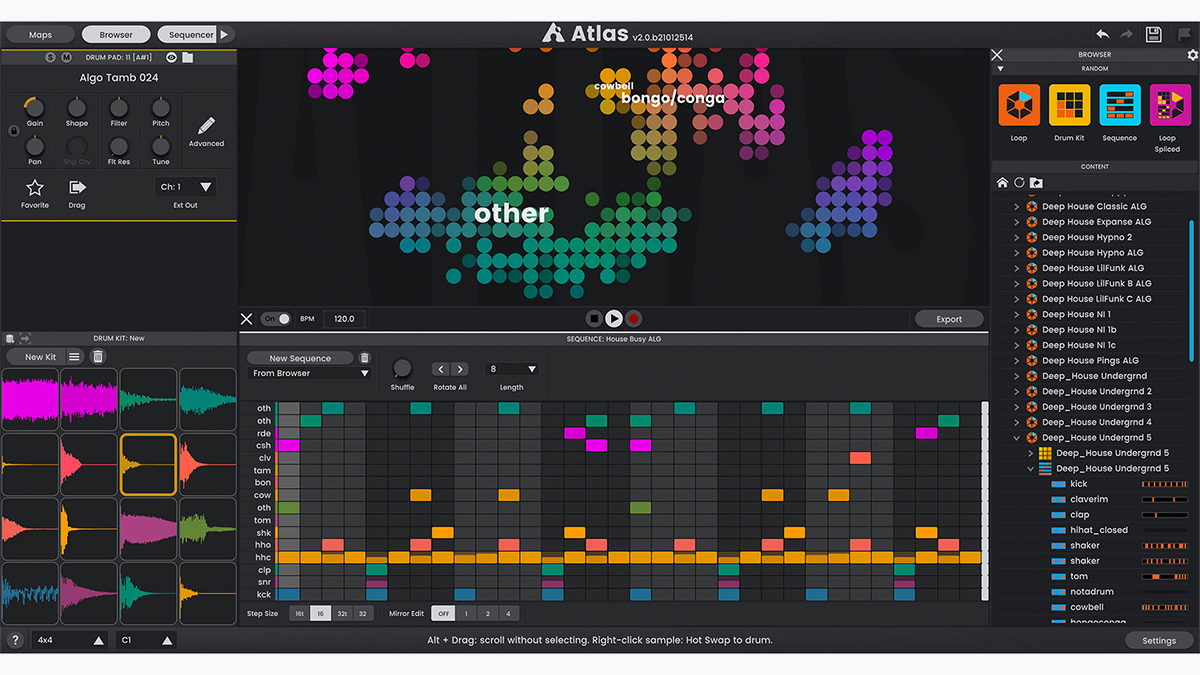
4. Algonaut Atlas 2
Our expert review:
Specifications
Reasons to buy
Reasons to avoid
Atlas exists in a similar realm to XO (above), in that it puts as much emphasis on the process of navigating your library of samples as on beat creation itself. As the name suggests, Atlas again makes use of sample ‘maps’, built by intelligent algorithms that create clusters of similar drum and percussion sounds.
Where Atlas sets itself apart is by putting its drum pads and sequencers upfront, allowing for rapid auditioning, editing and arrangement of sounds. This all makes the process of building and customising drum kits incredibly quick and flexible. As such, it’s a great tool for those who feel confined by repeatedly drawing on the same go-to drum samples or who reckon their sonic palette is in need of a shake up.
With over 1,500 drum samples included, there’s plenty to get your teeth into even without your own library to explore. Atlas’ adaptable interface can also be adjusted to replicate a variety of common hardware controllers, such as Ableton Push, Arturia’s Beatstep or Novation’s Launchpad range.

Specifications
Reasons to buy
Reasons to avoid
On the surface, Playbeat might look like a straightforward sample-based drum machine, but there’s a lot more to this beat sequencer than first meets the eye. The USP of Audiomodern’s virtual groovebox lies in the fact that it makes use of multiple intelligent algorithms in order to automatically assist in the creation of fresh drum patterns.
This is done, in part, by multiple levels of customisable randomisation, which can be used to shuffle things like the position, pitch and panning and introduce flams and repeats. Version 3 takes the inherent ‘cleverness’ to a whole new level, though, with the introduction of the ‘SMART’ algorithm. Playbeat 3 studies how you use it to make beats, pens some studious notes and applies these observations into its choices of randomised groove that fit your own style.
The beats themselves can be composed from your own sample collection, or from a high-quality assortment of factory sounds and kits. Playbeat 3 is a great choice for anyone looking to break out of their usual drum habits, and allows you to be as hands-off or hands-on as your mood dictates.
Read the full Audiomodern Playbeat 3 review

6. Modalics Beat Scholar
Our expert review:
Specifications
Reasons to buy
Reasons to avoid
Beat Scholar offers a unique take on drum step sequencing that’s focused around what its developer Modalics calls ‘beat pizzas’. In practice, this equates to a step sequencer full of circles (beats), which can be subdivided individually to create interesting rhythmic variations.
What’s more, each sound doesn’t have to be on its own lane - you can place any drum on any beat, or any part of a beat (each ‘pizza’ can be divided into up to 42 slices). Adding bars and changing measures and beat values can all be done with just a few clicks, giving you huge scope for experimentation.
It’s a genuinely fresh (and tasty) spin on drum sequencing. This sequencer comes attached to a built-in sampler, which is stocked with more than 250 sounds that cover classic drum machine tones and more esoteric timbres. You can also drag and drop your own samples, tweaking them with a variety of controls and effects.
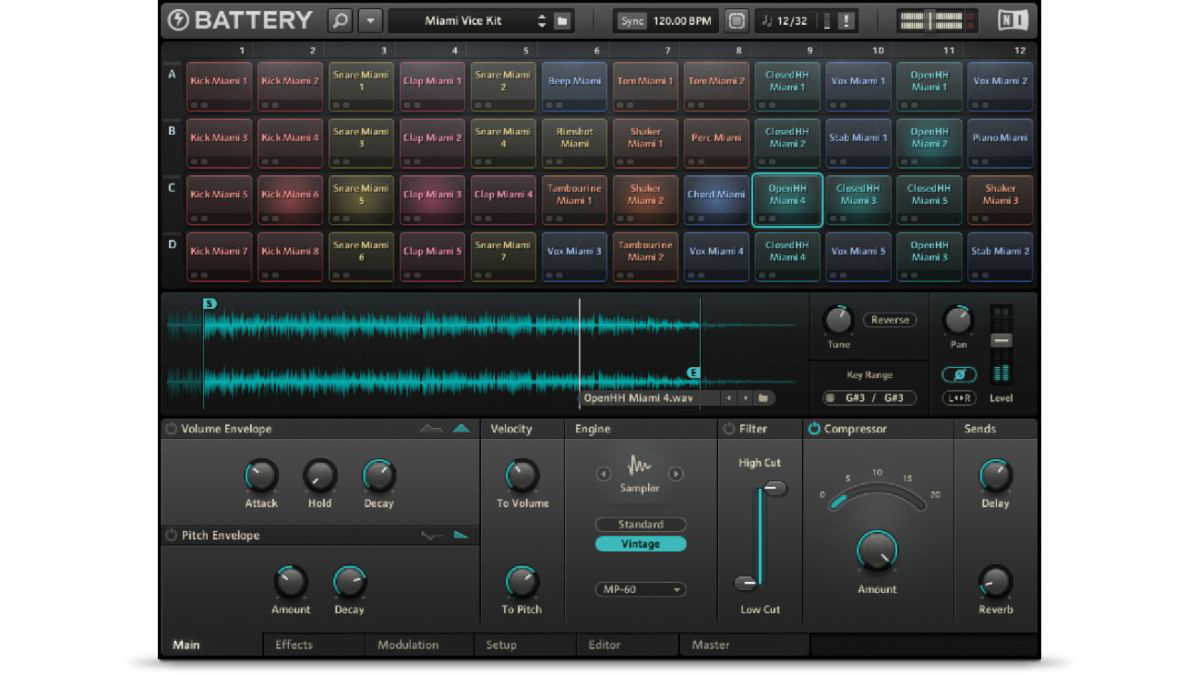
Specifications
Reasons to buy
Reasons to avoid
One of the original cell-based software drum machines, it’s over 20 years since the release of version 1 of NI’s workhorse, and it’s been languishing at version 4 since 2013. Nonetheless, it still stands as an exemplar of software instrument design.
With up to 128 layered cells providing more than enough space for even the most elaborate of kits, deep sound editing, envelope and LFO modulation, a well-judged array of insert and send effects, and four group busses, it could easily serve as any producer’s go-to percussion source.
Also a factor in Battery’s continuing success is the vast repository of genre-spanning add-on kits available through NI’s extensive range of Expansions.
Read the full Native Instruments Battery 4 review
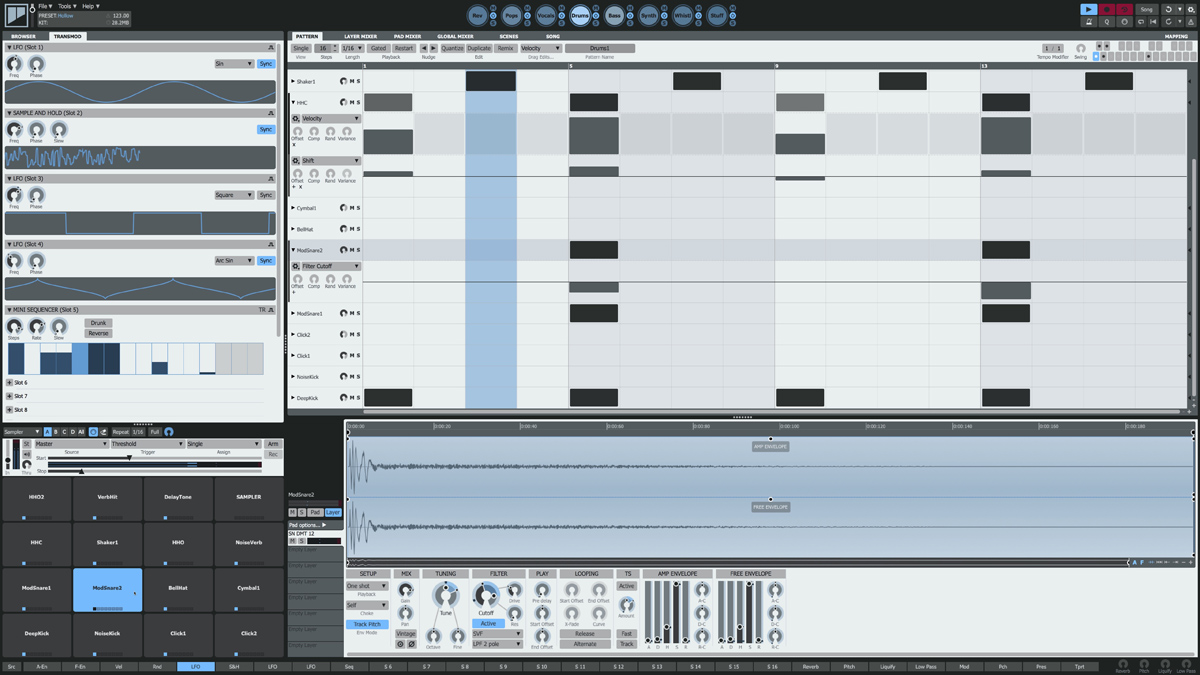
Specifications
Reasons to buy
Reasons to avoid
More a self-contained ‘groove DAW’ than a drum machine in the literal sense, FXpansion’s ambitious plugin/app is capable of powering not just your drum tracks but potentially the whole rhythm section.
Eight self-contained engines each sport 64 eight-layer sample pads and a polyrhythmic step sequencer, while effects are available to every layer and pad and the master output. The brilliant TransMod modulation system, meanwhile, enables assignment of an embarrassment of modulation source riches to any number of target parameters across all engines.
Live sampling and automatic loop slicing are further highlights, giving Geist2 an additional live performance angle that sets it even further apart from the pack.
Read the full FXpansion Geist 2 review
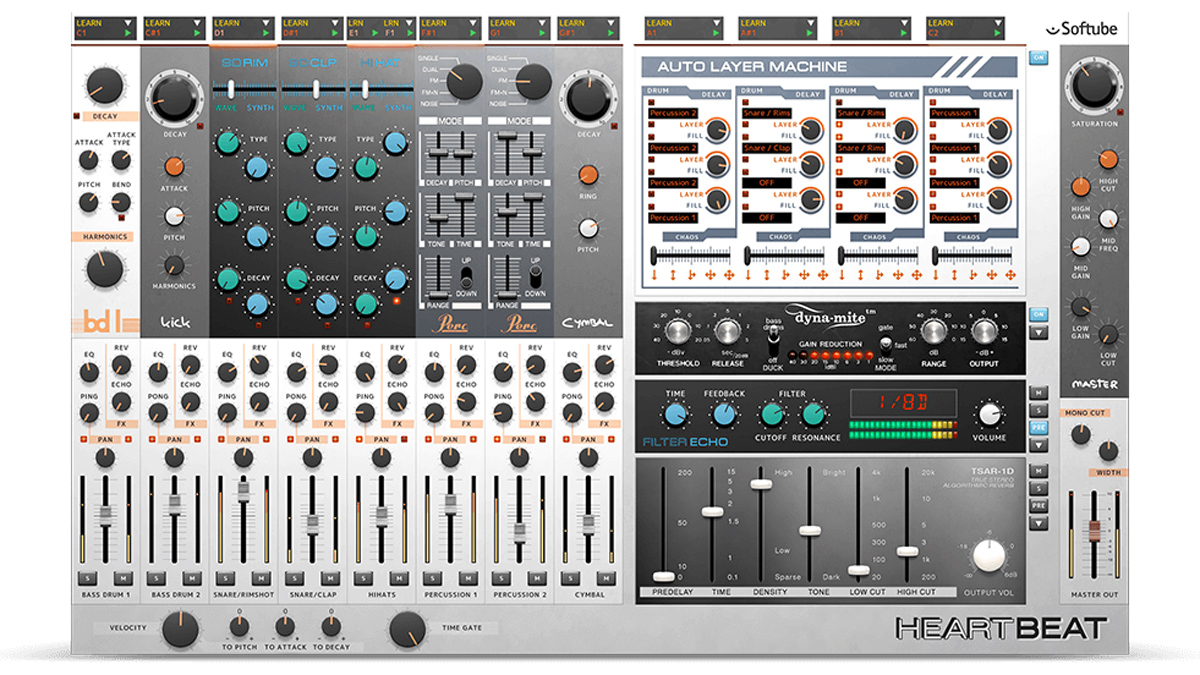
Specifications
Reasons to buy
Reasons to avoid
One of a few drum machines in our round-up that don’t include any form of sequencing, Heartbeat makes up for the architectural omission with a fabulous synthesis engine (plus a few sampled elements) that really gets the pulse racing.
Inspired - aren’t they all? - by Roland’s TR beatboxes, but not directly emulating any of them, it comprises eight sound-specific drum synth channels (two kicks, two snares, hi-hats, cymbals and two percs), top-notch effects, and a MIDI input processor for layering sounds and triggering (Auto Layer Machine).
Heartbeat’s main strengths are its detailed editing and the flawless analogue authenticity for which Softube is known.
Read the full Softube Heartbeat review
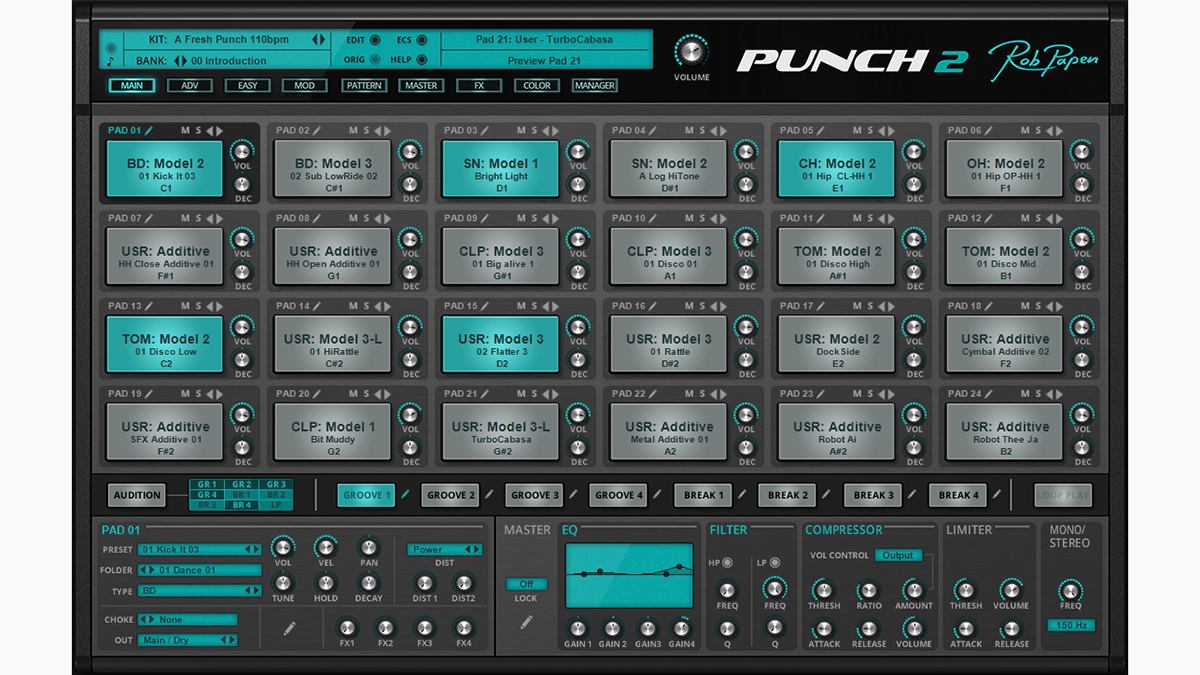
10. Rob Papen Punch 2
Our expert review:
Specifications
Reasons to buy
Reasons to avoid
Rob Papen’s Punch has been a go-to favourite for many electronic producers for well over a decade. This version two update of the sampling-and-synthesis powerhouse is a massive step up from the original.
Headline additions here include loop import and slicing, a new 24-pad Main page for quick kit building, String and Additive synth engines, master effects and more. We were already big fans of Punch’s incredible sound, liberating technical spec and enormous preset library, and this even more hard-hitting sequel only ups the appeal further.
Best drum machine plugin: Buying advice
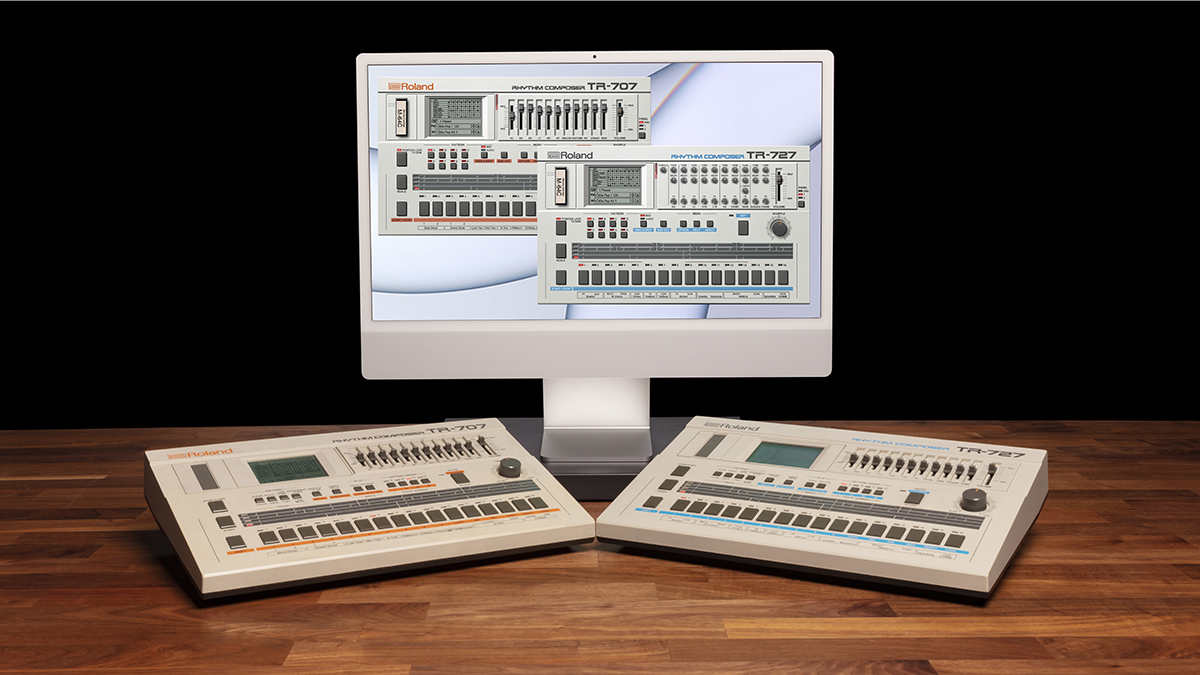
Do you need a drum machine plugin?
Compared to the synth and effect plugin worlds, the virtual drum machine realm is fairly small and underpopulated. The reason for this is that, probably more so than with any other plugin type, a lot of music makers are happy to make do with the tools offered by their chosen DAW.
Drum production doesn’t have to be complicated. If you’re working with samples, tools such as Ableton’s Drum Rack, Logic’s Drum Machine Designer or FL Studio’s FPC are more than capable of helping you to create pro-quality productions. What’s more, a lot of producers prefer to forego these tools entirely and work by arranging sampled hits directly onto an arrangement timeline - an equally valid choice.
Other common beatmaking options include the likes of Native Instruments’ Maschine or Akai’s MPC software, which offer a lot of drum machine-like tools but also more advanced sampling and sequencing capabilities that put them into the realm of being DAW-like, self-contained production tools.
The benefit of dedicated drum machines, however, is that they’ll usually come with a raft of advanced features specifically aimed at assisting with various aspects of beat production. This could be through the use of unique, rhythmically-minded sequencers, synthesis engines designed specifically for percussive purposes or - as in the case of some more recent plugins - intelligent tools to help you find the perfect drum sound.
One final note on what’s not included here. We’re focusing on drum machines, rather than ‘realistic’ sampled drum instruments. By that we mean that our focus is on electronic-orientated samplers and synths. We’ve not included the likes of Toontrack’s EZdrummer or Native instruments Drum Lab, which aim to replicate the sound of acoustic drums and a real drummer.
VST or AU?
There are a variety of plugin standards out there, so before you buy any plugin instrument, you need to make sure that your DAW is compatible with it.
On the PC, Steinberg’s VST (Virtual Studio Technology) is by far the most popular, and supported by pretty much all the major DAWs. You can get Mac VSTs, too (though it’s worth mentioning that not all Windows VSTs run on Mac), and Apple also has its own standard called AU (Audio Units). You may see plugins listed as VST 3 too, which is merely the most up-to-date version of the format, although this may not be compatible with some older versions of DAWs.
You may also encounter standards such as AAX and RTAS, both of which are specific to Avid’s Pro Tools software. Similarly, Reason Studios offer Rack Extensions, designed to run specifically within the company’s DAW, Reason. DAW developer Bitwig has recently launched a universal format named CLAP, although it’s very early days for this.
Be sure to check compatibility with your specific computer hardware, too. For example, not all plugin synths currently offer native support for Apple's M1 and M2 Macs, though more and more are being updated to provide this.
Synthesis, samples… or both?
Electronic drum machines use one of two approaches to create sounds. The first of these is synthesis. As with a melodic synthesiser, this involves using electronic means to fabricate a sound from scratch. A drum or percussion synthesiser is just like any other synth plugin - and most synths can be used to create drum sounds in some way - albeit adapted to suit percussive duties. This usually means the inclusion of specific drum engines, designed to synthesise things like kicks, snares and hi-hats, and a rhythmically-focussed sequencer.
A lot of vintage drum machines used synthesis to create sound, the most notable example being the Roland TR-808, which is still renowned for its sub-heavy synth kicks and metallic cymbal tones.
Synth drums are, unsurprisingly, often synthetic sounding, but can be very flexible since a dedicated drum synth will usually offer plenty of controls to shape the timbre of your raw sound.
The second - and these days more common - method is sampling. This involves using a recorded sound as the primary source. When it comes to drum production, this is commonly a ‘one-shot’ sample - ie, a simple, short recording of a drum or percussion hit - that plays once each time it’s triggered. However, some instruments also work with looped recordings or ‘multisamples’, which use multiple variations of a sound for more realistic and varied results.
Sampling is a better approach for recreating realistic drum sounds and ‘real world’ timbres. It is, however, beholden to the breadth and quality of your available sample library.
In reality, most modern drum machines combine elements of both approaches. Some will offer individual simple and sampling generators side-by-side. Even straightforward sample-based instruments tend to incorporate elements of synthesis, by letting users adjust the pitch of a sample, apply filters, modulation and shape the output with envelopes.
Related buyer's guides
MusicRadar's got your back
- Best guitar VSTs to supercharge your recordings
- Best vocal plugins
- Best synth plugins
- Best reverb plugins
- Best delay plugins
- Best creative multi-effects plugins
- Best compressor plugins
- Best EQ plugins
Want all the hottest music and gear news, reviews, deals, features and more, direct to your inbox? Sign up here.
I'm the Managing Editor of Music Technology at MusicRadar and former Editor-in-Chief of Future Music, Computer Music and Electronic Musician. I've been messing around with music tech in various forms for over two decades. I've also spent the last 10 years forgetting how to play guitar. Find me in the chillout room at raves complaining that it's past my bedtime.